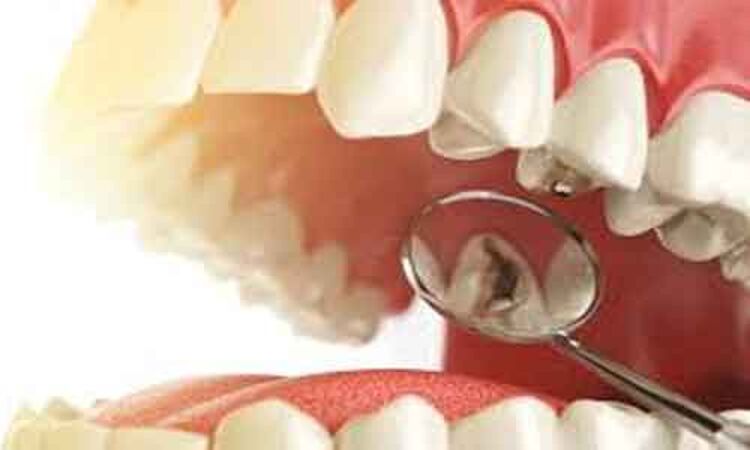- Home
- Medical news & Guidelines
- Anesthesiology
- Cardiology and CTVS
- Critical Care
- Dentistry
- Dermatology
- Diabetes and Endocrinology
- ENT
- Gastroenterology
- Medicine
- Nephrology
- Neurology
- Obstretics-Gynaecology
- Oncology
- Ophthalmology
- Orthopaedics
- Pediatrics-Neonatology
- Psychiatry
- Pulmonology
- Radiology
- Surgery
- Urology
- Laboratory Medicine
- Diet
- Nursing
- Paramedical
- Physiotherapy
- Health news
- Fact Check
- Bone Health Fact Check
- Brain Health Fact Check
- Cancer Related Fact Check
- Child Care Fact Check
- Dental and oral health fact check
- Diabetes and metabolic health fact check
- Diet and Nutrition Fact Check
- Eye and ENT Care Fact Check
- Fitness fact check
- Gut health fact check
- Heart health fact check
- Kidney health fact check
- Medical education fact check
- Men's health fact check
- Respiratory fact check
- Skin and hair care fact check
- Vaccine and Immunization fact check
- Women's health fact check
- AYUSH
- State News
- Andaman and Nicobar Islands
- Andhra Pradesh
- Arunachal Pradesh
- Assam
- Bihar
- Chandigarh
- Chattisgarh
- Dadra and Nagar Haveli
- Daman and Diu
- Delhi
- Goa
- Gujarat
- Haryana
- Himachal Pradesh
- Jammu & Kashmir
- Jharkhand
- Karnataka
- Kerala
- Ladakh
- Lakshadweep
- Madhya Pradesh
- Maharashtra
- Manipur
- Meghalaya
- Mizoram
- Nagaland
- Odisha
- Puducherry
- Punjab
- Rajasthan
- Sikkim
- Tamil Nadu
- Telangana
- Tripura
- Uttar Pradesh
- Uttrakhand
- West Bengal
- Medical Education
- Industry
CP-OCT helps detect non-cavitated approximal caries, Study says

According to recent research published in the Journal of Dentistry, investigators have found out that cross-polarized optical coherence tomography (CP-OCT) is a nondestructive, no ionized-radiation caries detection technique, which seems suitable to detect non-cavitated approximal caries and observing the Coronal-plane appears better than Horizontal-plane.
Haixia Xing and associates from the Department of General Dentistry, Peking University School and Hospital of Stomatology, Beijing, China carried out the present study with the objective to assess the detection ability and the effect of analyzing plane of CP-OCT for non-cavitated approximal caries.
The authors selected a total of thirty human extracted premolars based on micro-computed tomography [μ-CT: μ- CT = 0: sound (n = 12), μ-CT = 1/2: caries into outer-/inner-half of enamel (n = 6 each), μ-CT = 3: caries into outer one-third of dentine (n = 6)].
All the teeth were mounted in a custom- made device to simulate approximal contact, and scanned from the marginal ridge above the contact area. CP-OCT images were analyzed by deepest caries extension from horizontal and coronal planes and repeated 48-hrs later. Sensitivity, specificity, percent correct, area under the ROC curve (Az), intra-examiner repeatability and correlation with μ-CT were determined.
The following interesting results were drafted-
- Sensitivity/specificity/Az for Horizontalplane, Coronal-plane, and Deepest from both planes were 94percent/58percent/0.76,81percent/100percent/0.90, and 94 %/58 %/0.82.
- Coronal-plane had significantly higher specificity than Horizontal-plane and Deepest (p = 0.004) but Horizontal-plane and Deepest were not different (p = 1.00).
- Horizontal-plane had significantly lower Az than Deepest (p = 0.048), but Coronal-plane was not different than Horizontal-plane (p = 0.07) or Deepest (p = 0.20).
- Correlation coefficients were Horizontal-plane (0.53, p < 0.001), Coronal-plane (0.84, p < 0.001), and Deepest (0.66, p < 0.001).
Therefore, the authors concluded that "within the limitations of this study, CP-OCT could be used to detect non-cavitated approximal caries. Analysis using the Coronal-plane is superior to the Horizontal-plane."
Dr. Nandita Mohan is a practicing pediatric dentist with more than 5 years of clinical work experience. Along with this, she is equally interested in keeping herself up to date about the latest developments in the field of medicine and dentistry which is the driving force for her to be in association with Medical Dialogues. She also has her name attached with many publications; both national and international. She has pursued her BDS from Rajiv Gandhi University of Health Sciences, Bangalore and later went to enter her dream specialty (MDS) in the Department of Pedodontics and Preventive Dentistry from Pt. B.D. Sharma University of Health Sciences. Through all the years of experience, her core interest in learning something new has never stopped. She can be contacted at editorial@medicaldialogues.in. Contact no. 011-43720751
Dr Kamal Kant Kohli-MBBS, DTCD- a chest specialist with more than 30 years of practice and a flair for writing clinical articles, Dr Kamal Kant Kohli joined Medical Dialogues as a Chief Editor of Medical News. Besides writing articles, as an editor, he proofreads and verifies all the medical content published on Medical Dialogues including those coming from journals, studies,medical conferences,guidelines etc. Email: drkohli@medicaldialogues.in. Contact no. 011-43720751


